1937 Bamford EV1 2hp stationary engine saved
Posted by Chris Graham on 9th October 2023
George Webb recounts the tale of discovering and then restoring his 1937 Bamfords EV1 2hp stationary engine.
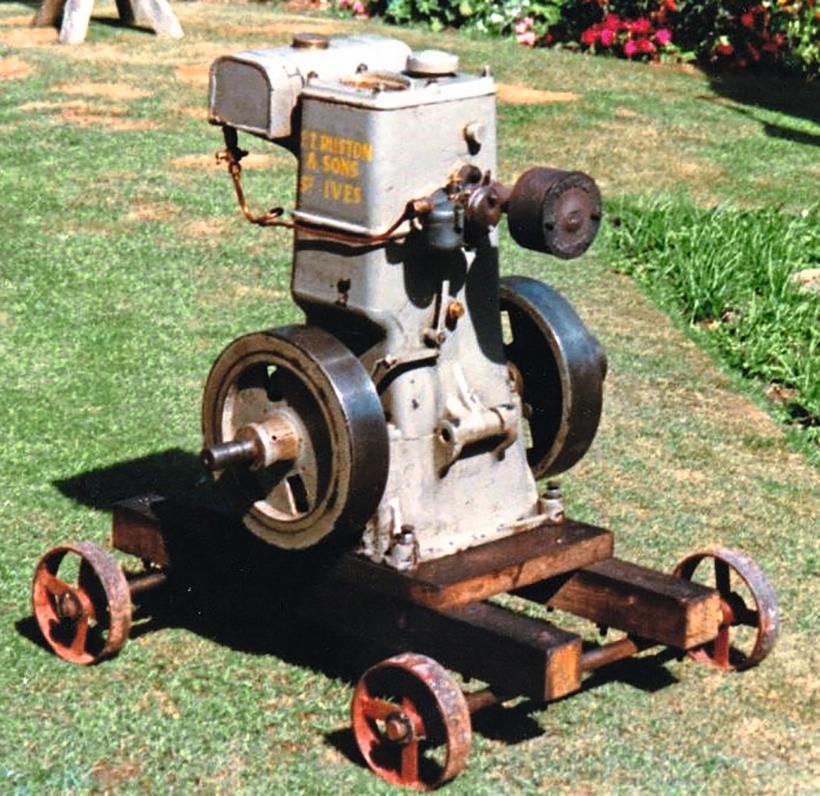
1937 Bamfords EV1 2hp: The engine as purchased from the Netley Marsh Steam Rally.
Having previously restored a Bamford SV3, I was rather keen to have a crack at another Bamford project so, when I came across a 1937 EV1 2hp (No. 15781) that was being sold at the Netley Marsh Steam Rally, it seemed to present the ideal opportunity.
It was the second day of the show and I was at my usual spot admiring the stationary engines, when I noticed this particular machine with a ‘For sale’ sign. It wasn’t actually running at the time, but obviously had been going recently as I could see water vapour was coming from the hopper. My initial reaction was that it would be more expensive than I could afford, so I walked away from it. However, when I got home I began to regret not having investigated further, and began looking through my Stationary Engine magazine back issues to work out what might be a reasonable offer. On the final day of the show I found that the engine was still available and that the asking price was quite a bit less than I expected. It was simply too good to resist and I bought it there and then.
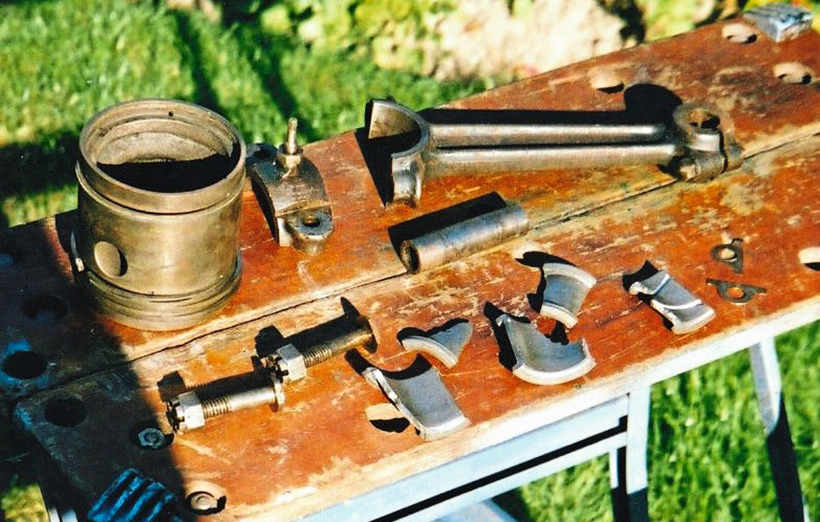
Here we see a selection of the damaged internal parts from the engine.
The only down-side was that the engine needed to be collected from the owner’s, home which turned out to be some distance from me. So, the next day it was loaded into my wife’s Ford Fiesta hatchback with the aid of a forklift truck. At home it was a bit of a puzzle getting it out again but somehow, by removing a few pieces, I managed it. The next day I decided to run the engine to see what I might need for it, apart from a starting handle which I knew was missing. I had assumed that the restoration would be mainly cosmetic, but that was clearly a big mistake!
When the engine started, the noise coming from it sounded strangely reminiscent of a blacksmith’s shop in a dockyard. It must have raised a few eyebrows at Netley Marsh among those who heard it, but I was determined to fix it. Several of the father’s wise sayings from years back crossed my mind but, as usual, they hadn’t appeared until after the event!
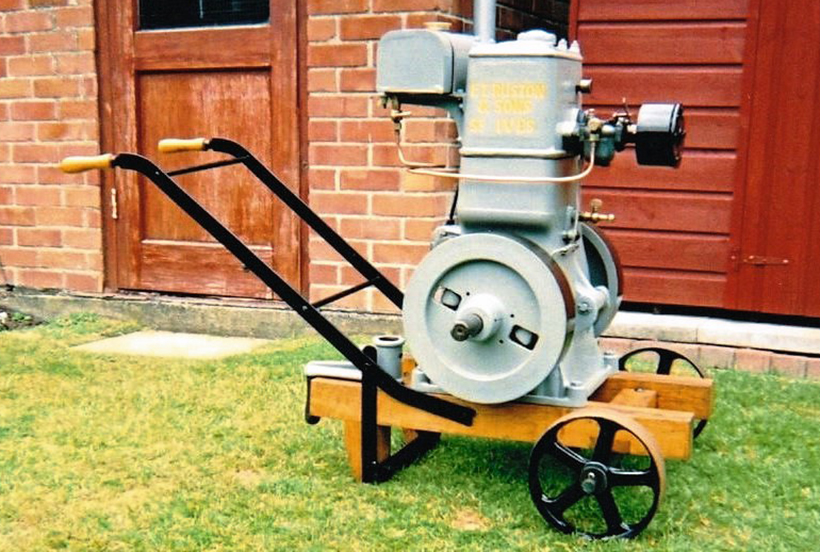
The engine on a two-wheeled trolley.
Two or three weeks passed before I plucked up enough courage to start working on it. In the meantime, I’d discovered that the engine had originally been dispatched to Williams of Colchester on 9th April, 1937. The next clue regarding its history was the name ‘FT Ruston’ that was painted on the side of the cylinder head. This company appeared to have been farm machinery agents and ironmongers from St. Ives, in Cambridgeshire; although I found out that there were several firms and persons with the same name and initials. Other than this, very little information came to light. The person I bought it from had acquired it in 1995 from an enthusiast who had rallied it, and that was all I was able to find out about it.
Upon stripping the engine, the reason for the noises became obvious. The internals were a disaster. I had topped-up the sump with oil prior to starting as this may have been emptied for transporting the engine, but there was some pretty thick sludge in the bottom, so I’m not sure that this was the case. The gudgeon pin and its locations in the piston were badly worn and scored. At the bottom end of the con-rod, the big-end shells were broken into three pieces, and it appeared that they may have been from a different engine as they didn’t fit the con-rod properly, and were much too large for the crankshaft journal. Also, one of the big-end bolts was a coach bolt with the square under the head filed-off, and only one shim was fitted on each side under the bearing cap. However, eBay provided a complete piston with con-rod, shims, bolts and white-metal bearing shells.

The engine was transferred to a more stable, four-wheeled trolley.
The cylinder bore was in good order and, after some adjustments, the piston and rings fitted perfectly. The main crankshaft bearings and big end journal were in good order, so the replacement big-end shells were fettled and bedded-in. The valves and seats only required a light re-grind and the springs were good, but the rocker shaft and arms were badly worn. A new shaft was made from the correct material by a local engineering firm, using the original as a pattern, and I fitted the arms with Oilite bushes. A new head gasket and handbook were bought at the Great Dorset Steam Fair and the reassembly proceeded well.
One unexpected problem arose with the ignition timing; I couldn’t find any marks whatsoever. The only way I could see to get over this was to un-ship the half-time wheel, slacken the main bearing bolts to move the crankshaft out, then rotate the wheel one tooth at a time until the valves opened and closed at the right position. The carburettor was in good order and only needed a clean and a strangler spring. The magneto worked alright, but had belonged to a motorbike which was evidenced by its advance/retard connections, so it was replaced with one of the correct type, previously bought at a Beaulieu autojumble.
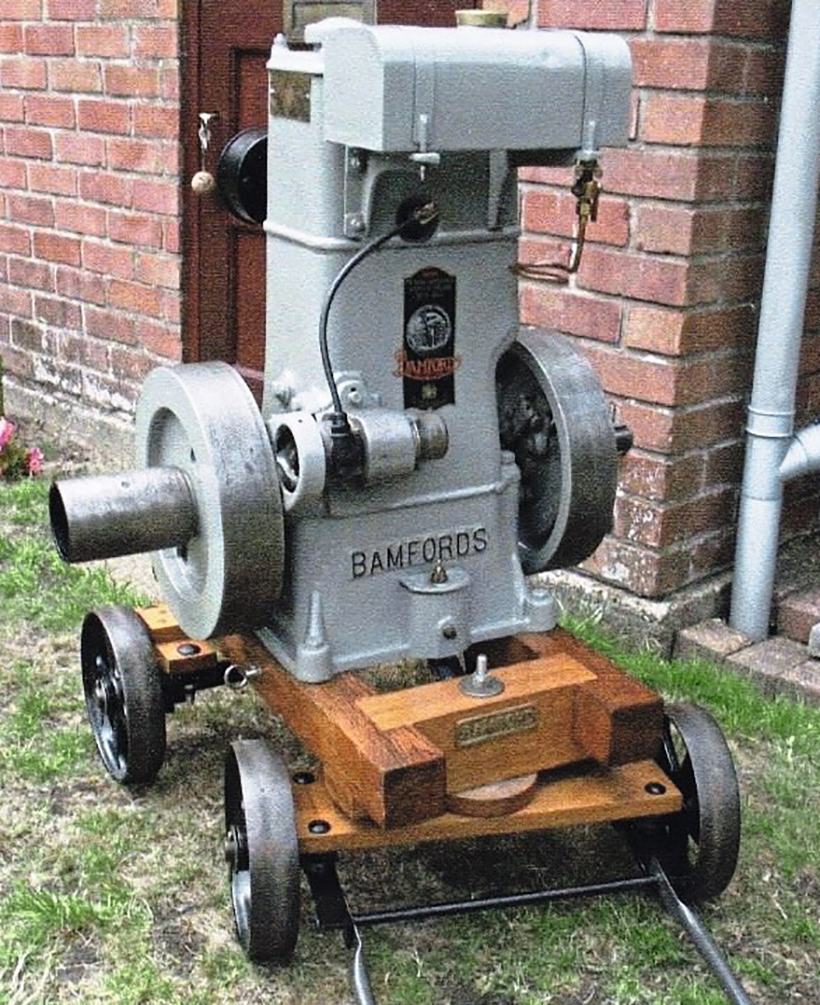
I’m very pleased with the finished engine.
Next came the cosmetic bit; I originally thought I was going to get away with things. I decided to keep the Ferguson grey and to clean-up the area around the name on the cylinder head as it was part of the engine’s history. On rubbing down the remainder, pillar box red paint and then the original Bamfords green were found, together with a fair amount of sandy soil. This could be evidence of another owner between Williams and FT Ruston, but I doubt I’ll ever know for sure.
A new oak trolley was made from fence posts given to me by a neighbour whose fence was blown over in a storm. It was similar to those found with some Lister D engines, but this proved to be a mistake as the engine was in danger of tipping forward if too close to the wheels, and too heavy to handle if moved nearer the middle. This was overcome by modifying it to a four-wheel arrangement. The engine now runs nicely and it’s a real tribute to Bamfords that it survives.
This feature comes from the latest issue of Stationary Engine, and you can get a money-saving subscription to this magazine simply by clicking HERE

Previous Post
Brilliant Craigs Tractor Enthusiasts’ working day
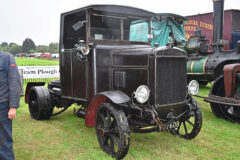
Next Post
Unique 1928 Scammell S10 artic finds new home



